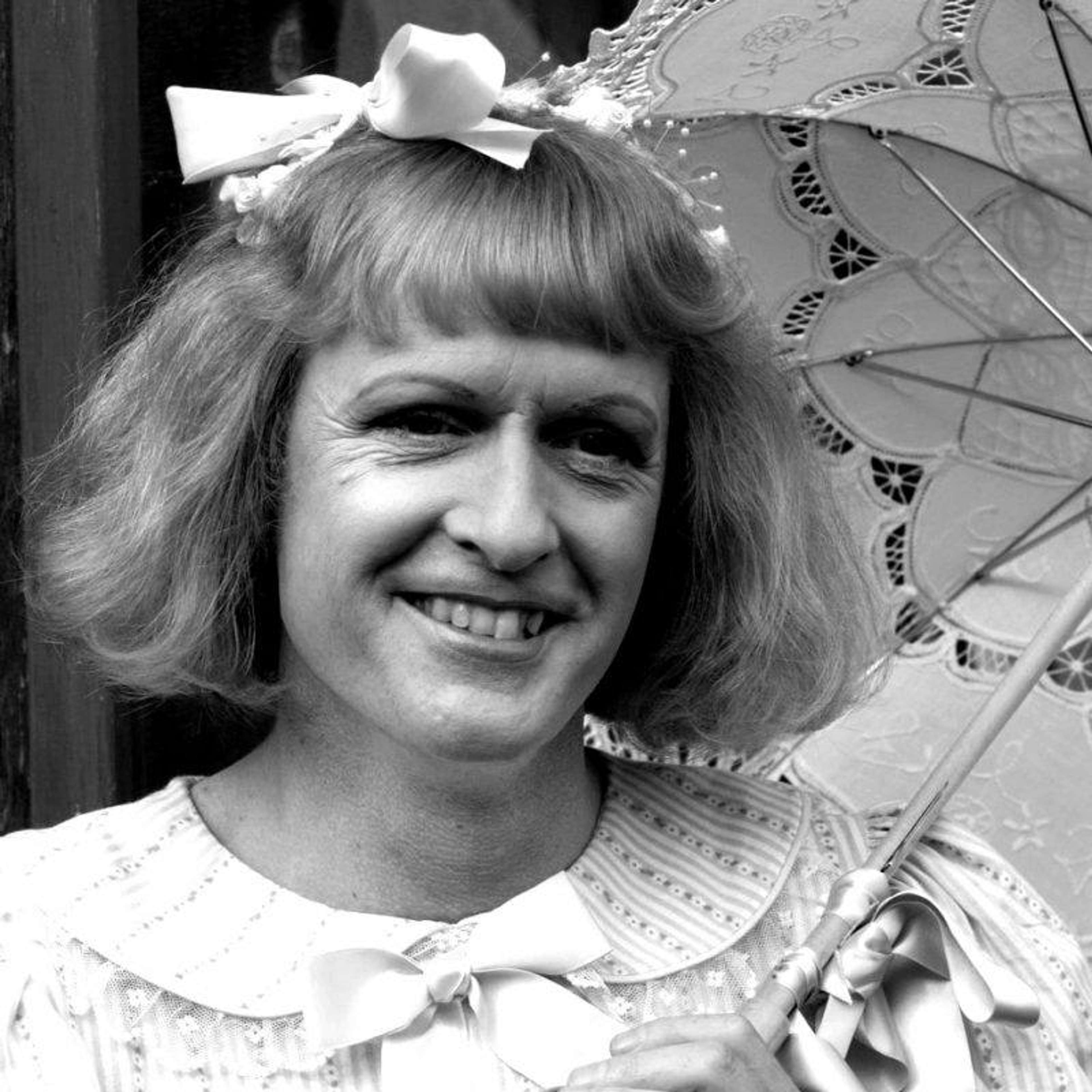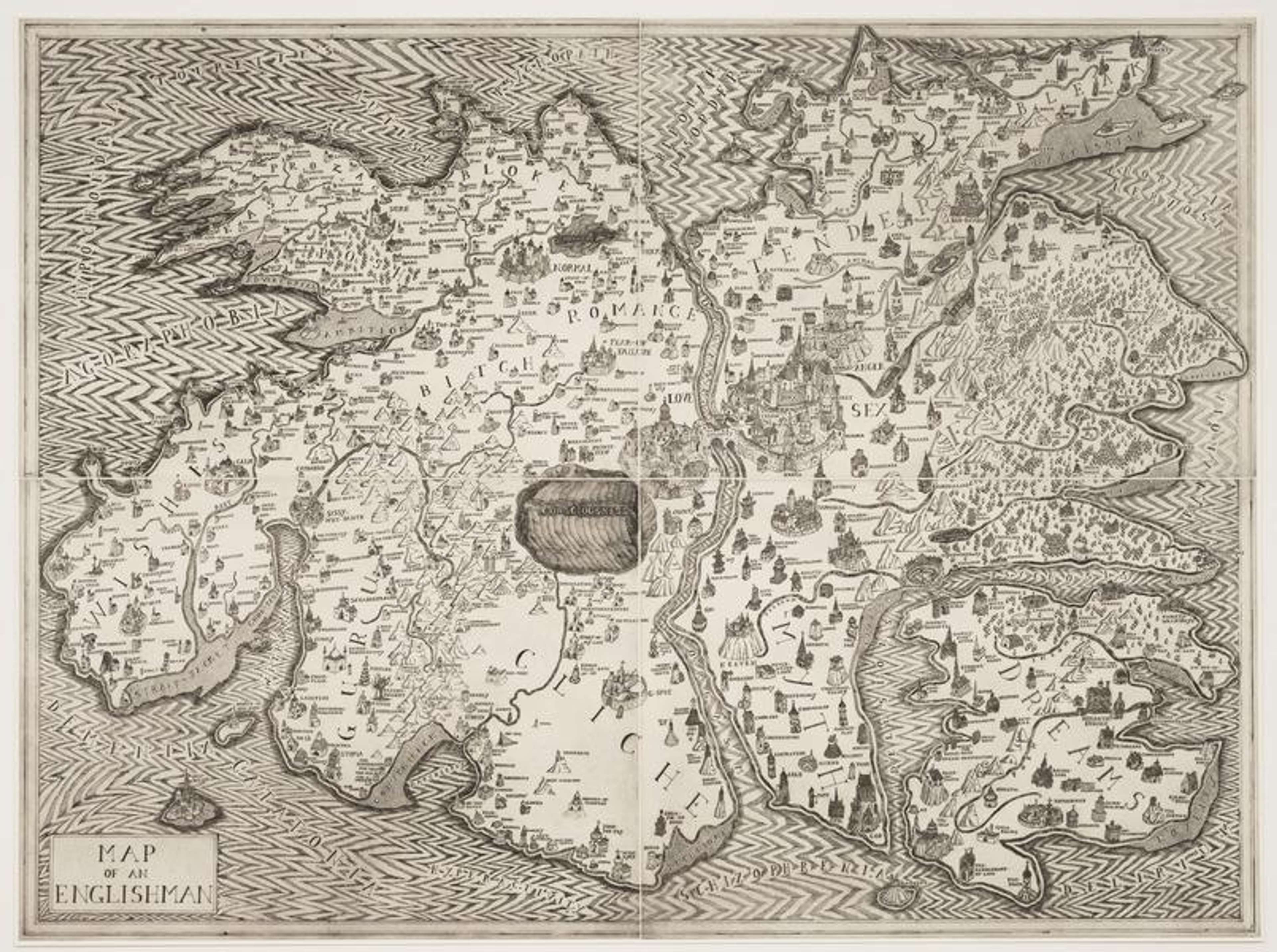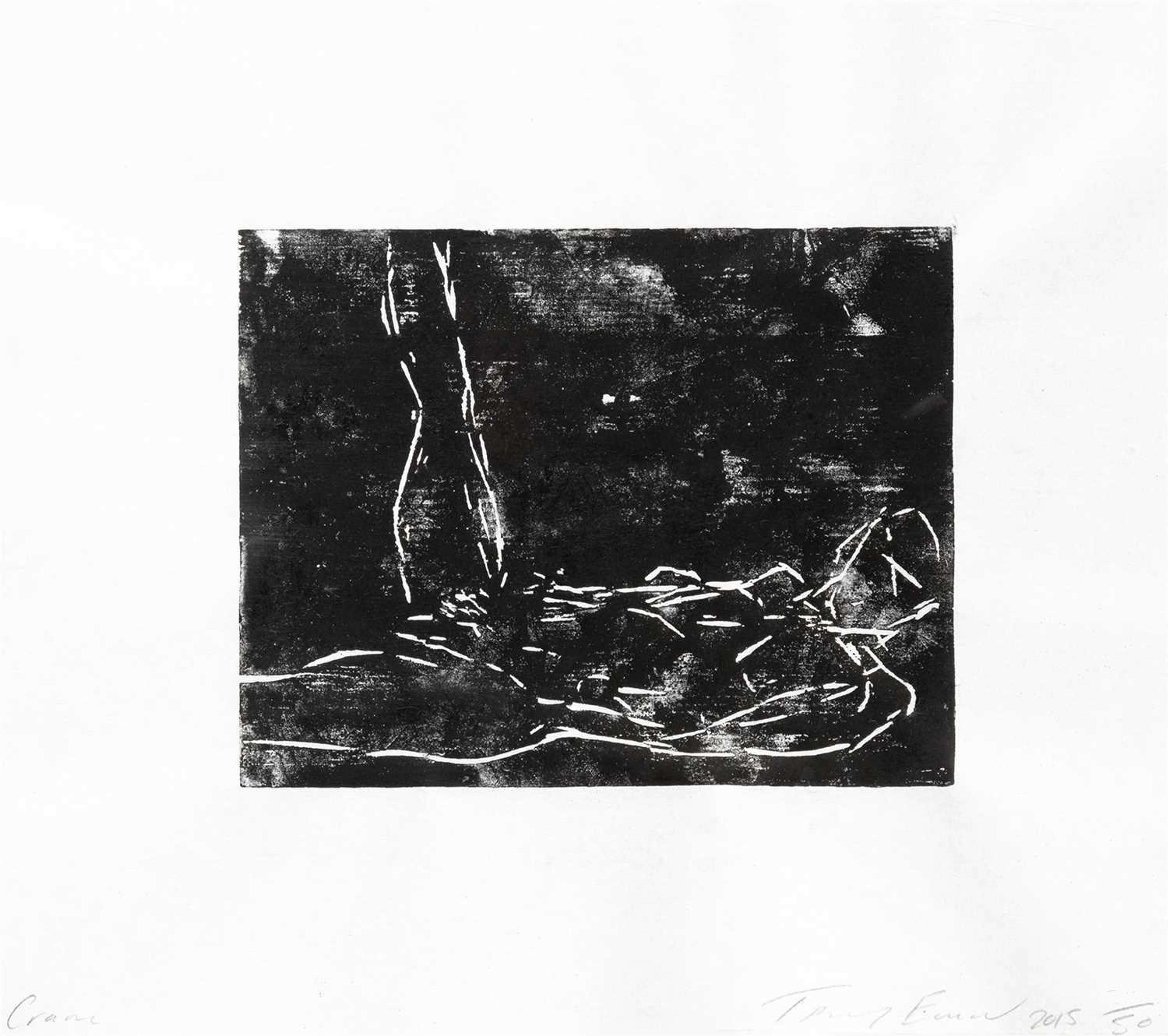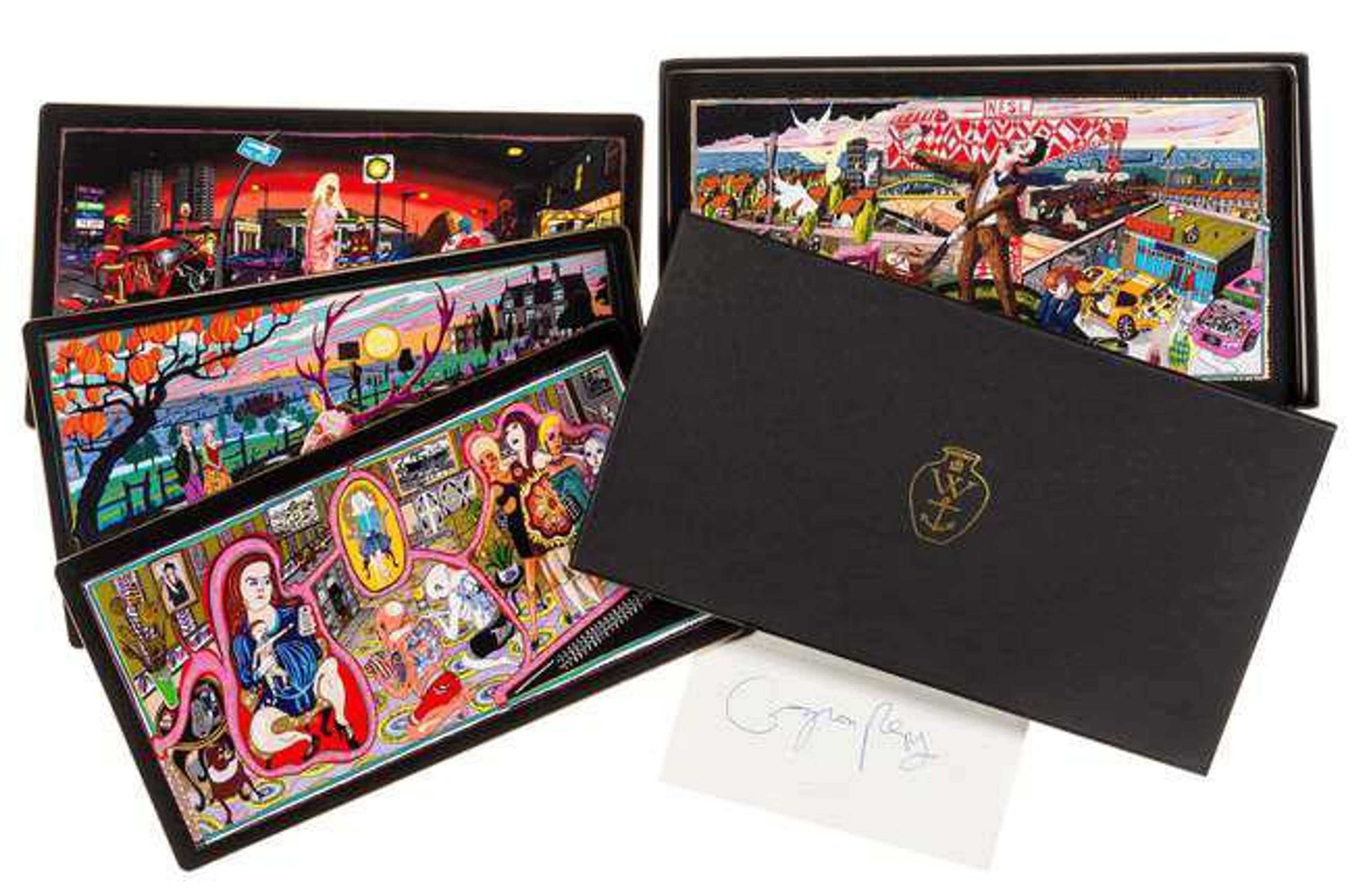The Social Commentary in Grayson Perry's Work
 Selfie With Political Causes © Grayson Perry 2018
Selfie With Political Causes © Grayson Perry 2018
Grayson Perry
34 works
Few British artists, contemporary or classical, are as distinctive or provoking as Grayson Perry. Using tapestry, ceramics, and other media types as his canvas, Perry unearths the latent underpinnings of societal constructs around class and masculinity. Through his innovative art, Perry delivers potent social commentary, emboldening viewers to question the norms that shape their lives and British national identity.
Through his work, Perry commands a challenge to the traditional archetype of masculinity and explores the way it entwines with class, art, and society. As we’ll see, Perry’s artistic raison d'etre is to disrupt societal narratives—and in doing so, he has become a pervasive voice in public discourses around gender, masculinity and class identity.
Grayson Perry's Exploration of Masculinity and Social Commentary
Perry's exploration of masculinity goes beyond the aesthetic domain, planting itself firmly within the realm of cultural critique. His artworks, traditionally ceramics but also tapestries and prints, are often clear commentaries on established gender norms: presenting a vision of masculinity that is complex and multifaceted. Rather than viewing masculinity as a monolith, Perry uses his work to unravel its layers, exposing a spectrum of masculinity that intersects with other components of identity.
Having cross-dressed most of his life, Perry’s own identity also reflects his exploration of masculinity. The artist often appears in public as ‘Claire’, his alter ego who dresses in flamboyant costumes and takes on varying feminine aesthetics. Perry has designed many of Claire’s outfits himself and assumed the character of Claire at major events, adding a personal and performative layer to his exploration of masculinity. Explaining that cross-dressing contains sexual appeal but does not reflect a deeper desire to become a female (or even dress a woman full-time), Perry’s adoption of feminine clothing at times deepens the exploration of his own masculinity as a complex, changeable experience.
For Perry, masculinity is intricately linked with class identity. The social commentaries embedded within his often include narratives about working-class men grappling with the expectations of gender, revealing the interplay between class, masculinity, and societal norms. Through both overt details and hidden meanings, Perry fosters an understanding of how these factors intersect to shape individuals' experiences.
Utilising a blend of humour, irony, and introspection, Perry's works shed light on the societal norms surrounding gender and class. Through intricate symbolism, his work probes into the relationship between masculinity and vulnerability, power, and insecurity. At the same time, Perry probes viewers to unravel their own assumptions and expectations.
Deconstructing Traditional Masculinity in Grayson Perry's Work
As a social commentator and artist, one of Perry's principal concerns is the crisis of masculinity in contemporary society. His art reveals a complex and nuanced view of masculinity, far from the representations we often see in mainstream media. It is here that we see Perry not just challenging but actively deconstructing traditional notions of masculinity.
A vital element of this deconstruction is Perry's exploration of vulnerability and emotional expression. His print piece, Map Of An Englishman brings this to the fore. Drawing on 16th and 17th century cartography techniques, he etches a psychological landscape that investigates the internal struggles of men. Unlike the traditional form, Perry’s map depicts behaviours and psychological states instead of locations, where the two landforms mirror the right and left sides of the brain. Intertwining themes of national identity and gender, the work presents a raw and vulnerable image of masculinity that stood was unusual at the time of its production.
Another salient feature of Perry's art is his subversive use of craft techniques, appropriating the historic mediums of ceramics and tapestry for the modern day. His deliberate choice challenges the more benign, conservative associations of ceramics and pottery, using them as a canvas to comment - and sometimes provoke - on the issues gender, class and contemporary society.
Perry’s masterpiece, The Vanity Of Small Differences, is a series of six tapestries that encapsulates the artist’s thematic discourse. Laden with social commentary, colour and everyday objects, it reveals the life story of a fictional working-class man named Tim Rakewell. Taking inspiration from William Hogarth's eight-part series A Rake's Progress, Perry’s embroidered works explore themes of aspiration, class mobility, and the construct of masculinity in contemporary British society.
With his intricately coded visual style, Perry aims to underline the artificiality of gender norms, subtly critiquing the dichotomies ingrained within societal notions of masculinity and femininity. In doing so, he offers a powerful counter-narrative to conventional ideas about masculinity.
The Themes and Influences in Grayson Perry's Art
Perry's art is marked by his consistent engagement with the core themes of identity, contemporary society, masculinity and social class. These themes are woven through his body of work, tying his artistry into an incisive narrative that communicates a potent social commentary.
Perry's influences are as diverse, spanning his own childhood to academic art history references. His upbringing in a turbulent family environment has notably marked his work, often manifesting in his artwork as complex narratives that explore issues of power, class and status.
Another influential layer of Perry's identity comes from his experience as a cross-dresser. As one of the most visible male figures to embody this in early 2000s Britain, Perry has become synonymous with a national dialogue around gender, presenting a documentary entitled Why Men Wear Frocks for Channel 4 in 2005. Drawing on his own life, Perry discussed the challenges and pleasures he’d faced as a cross-dresser, using it as a vehicle to examine masculinity in Britain at the beginning of the 21st century.
Of course, Perry’s relationship with gender presentation extends beyond the limelight. Cross-dressing has been a part of his life since early childhood, and the resulting evolution of his identity and sexuality deeply informs his approach to gender in his artwork. The figure of ‘Claire,’ his alter ego, is an organic construction dating back to Perry’s early days in London. Today, she continues to help Perry disrupt and challenge the traditional notions of masculinity, layering his heterosexual male self with a female gender presentation. His exploration of his own gender identity elevates his art beyond mere aesthetics, transforming it into a defiant act of self-expression and social critique.
 Image © Artsy / Comfort Blanket © Grayson Perry 2014
Image © Artsy / Comfort Blanket © Grayson Perry 2014Perry's work also reflects his engagement with art history and popular culture. His visual style is a deliberate and sometimes shocking fusion of historical and contemporary influences, seen in the use of ancient forms like pottery or tapestry combined with modern-day images and iconography. Comfort Blanket, for instance, is a tapestry that weaves together numerous cultural references from the royal family to pop culture icons to common phrases. Taking its title from the questionable narrative of the UK as a safe and comforting entity on the global stage, it offers a critique of modern British identity and culture.
Symbolism and Hidden Meanings in Grayson Perry's Art
Brimming with symbolism and metaphor, Perry deliberately saturates his creations with meaning to elicit layers of interpretation. For viewers, his choice of motifs offers a lens on his perspective on life, identity, and society.
Take the recurring motif of teddy bears in Perry's work, for example. Alan Measles, Perry's childhood teddy bear, often appears in his art as a symbol of innocence, comfort, and vulnerability. The bear serves as a stark contrast against the backdrop of complex societal issues that Perry addresses, reminding viewers of the humanity at the heart of these discussions.
Similarly, maps are another recurring motif in Perry's work, such as in Map Of An Englishman and Map Of Days. These maps don't depict physical landscapes but chart psychological and societal terrains. They are an intimate exposition of identity, emotions, and social dynamics.
As masterful works of visual communication, Perry's art uses symbols and hidden meanings to engage viewers in a process of exploration and reflection. Perry’s whimsical symbolism serves as a guidepost through which we can decipher the rich narratives within his work.
Grayson Perry's Impact on Contemporary Art and Society
Perry's contribution to contemporary art and society has earned him a reputation as a household name across the UK. As a Turner Prize winner and a prominent cultural commentator, his influence reaches far beyond the boundaries of the art world.
For an artist whose schtick hinges on being a provocateur and outsider, the fact that major national institutions have sought to work alongside Perry is somewhat jarring. Nonetheless, his collaborations with influential organisations have arguably enabled him to bring alternative narratives into the cultural mainstream.
A prime example is his work with the British Museum in 2011, where he curated an exhibition titled Tomb Of The Unknown Craftsman. This exhibition, in which Perry made an installation from historical artefacts in the museum’s collection, offered a nuanced commentary on the intersection of art, history, and culture. Specifically, it pays homage to the anonymous artists through history whose work has survived their personal legacies. Typically class-conscious, Perry highlights the fact that, for most of history, it was the patrons of artwork that were memorialised over the artist.
Grayson Perry: The Tomb Of The Unknown Craftsman © The British Museum 2011Perry's work has also had a palpable influence on other artists. His innovative use of traditional craft techniques, and his blending of personal experiences with social issues, have opened new pathways for contemporary artists to explore themes of identity, masculinity, and class in their work. London-based artist Corbin Shaw is one artist making work in a similar vein, producing textiles based on the St Georges Cross flags typically seen in football stadiums. Like Perry, Shaw explores masculinity by disrupting the traditional connotations of this instantly recognisable symbol, while also paying tribute to the male-dominated domains that have shaped his own identity.
Beyond art, Perry effectively uses his platform to raise awareness about social issues. His public talks and television appearances, such as his critically acclaimed 2016 series All Man, serve as platforms where Perry dissects how masculinity manifests in different social settings. His open dialogues on class, gender, and identity stand as thought-provoking contributions to public discourse, cementing his role as a notable figure in both the contemporary art market and the British cultural landscape at large.
A Review of Grayson Perry's Most Popular Exhibitions and Works
Owing to its contemporary relevance and widespread appeal, Perry's work has been exhibited in numerous esteemed venues around the world. It was his fascination with the notion of popularity in modern art that gave name to his major 2017 show The Most Popular Art Exhibition Ever! held at the Serpentine Galleries. In this showcase, Perry deftly used his work to explore the state of contemporary art, navigating the interplay between art, the public, and societal norms.
Grayson Perry: Delusions of Grandeur
Delusions of Grandeur, running until 26 October 2025, is the largest contemporary exhibition ever staged at The Wallace Collection. This ambitious show brings together Perry’s new ceramics, tapestries, collages, and furniture, all created in response to the museum’s historic collection. Drawing on his long-standing fascination with the contrasts within the Wallace Collection - particularly the mix of ornate Rococo femininity and the bold masculinity of arms and armour - Perry explores themes of gender, domesticity, perfectionism, and the meaning of craft. Blending traditional and digital techniques, the exhibition challenges ideas about what it means to make and collect art.
Some of Perry's most iconic works, such as The Walthamstow Tapestry and Claire's Coming Out Dress remain seminal pieces within his oeuvre. The former, a vast 15-metre-long tapestry, explores the cycle of life through the vehicle of rampant consumerism, while the latter, a colourful ceramic piece, captures the artist's alter-ego's daring emergence.
Among Perry's wide-ranging artistic repertoire, his ceramics hold a special place as the first medium adopted by the artist, now famed for their intricate narratives and impactful symbolism. Chosen for their seemingly inoffensive nature, Perry’s ceramics are crafted to provoke. Etched with musings, obscenities and coded images, the artist simultaneously reinforces the art of pottery and disrupts the cultural assumptions around it.
Works like Golden Ghosts and Jane Austen In E17 are quintessential examples. Golden Ghosts, a large ceramic vase, encapsulates a sad nostalgia from Perry's childhood memory, while Jane Austen In E17 serves as a satirical reminder of Britain’s rigid history of class hierarchy. These ceramics are unlikely storytellers, echoing Perry's signature themes of identity, class, and gender while engaging with the question of what art is.
Weaving Discourse: Perry's Artistic Commentary on Class and Masculinity
An exploration of Grayson Perry's work unearths a complex thematic web of masculinity, class, and British society. Through his art symbolism, Perry’s work offers an astute social commentary that is inherent to his artistry. His body of work is not merely an exhibition of ceramic vases and intricate tapestries, but a visual discourse examining and critiquing the constructs of our society.
Perry's interpretation of masculinity, unshackled from traditional norms, serves as a beacon in our contemporary society, encouraging us to engage in necessary conversations around identity. Meanwhile, his exploration of class, woven into the threads of his tapestries or etched onto his ceramics, demands that viewers critically consider the order of British society.
The significance of Perry's art lies in its ability to resonate deeply with our shared experiences. Once an outcast from his world, Perry’s vision speaks to the vulnerability in all of us, offering us an intimate connection with broader societal issues. Now, he stands as one of the most influential British artists of our generation, and he has no doubt made work that will be returned to for years to come. In the meantime, we can rely on Perry’s work to shock, to provoke, and to delight us.














